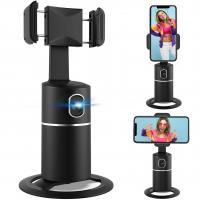How Many Lumens Is Good For A Projector?
When it comes to selecting a projector, one of the most critical factors to consider is the brightness, which is measured in lumens. The number of lumens a projector needs can vary significantly based on several factors, including the environment in which it will be used, the size of the screen, and the type of content being displayed. In this article, we will delve into the various aspects that influence the ideal lumen count for a projector, helping you make an informed decision that suits your specific needs.
Understanding Lumens
Lumens measure the total amount of visible light emitted by a source. In the context of projectors, a higher lumen count means a brighter image. However, brighter is not always better; the optimal brightness depends on your specific use case.
Factors Influencing Lumen Requirements
1. Ambient Light Conditions
The amount of ambient light in the room where the projector will be used is perhaps the most crucial factor in determining the necessary lumen count.
- Dark Rooms: If you plan to use the projector in a dark room, such as a home theater, a projector with 1,000 to 2,000 lumens will generally suffice. The lack of ambient light allows the projector to display a clear and vibrant image without needing excessive brightness.
- Dimly Lit Rooms: For rooms with some ambient light, such as a living room with curtains drawn, a projector with 2,000 to 3,000 lumens is recommended. This range ensures that the image remains visible and vibrant even with some light interference.
- Well-Lit Rooms: In environments with significant ambient light, such as conference rooms or classrooms with windows and lights on, a projector with 3,000 to 4,000 lumens or more is necessary. This higher brightness level helps combat the ambient light, ensuring the image remains clear and readable.
2. Screen Size
The size of the screen also plays a significant role in determining the required lumens. Larger screens require more lumens to maintain image clarity and brightness.
- Small Screens (up to 80 inches): For smaller screens, a projector with 1,000 to 2,000 lumens is generally adequate, especially in darker environments.
- Medium Screens (80 to 120 inches): For medium-sized screens, a projector with 2,000 to 3,000 lumens is recommended. This range ensures that the image remains bright and clear, even in rooms with some ambient light.
- Large Screens (over 120 inches): For large screens, especially in well-lit environments, a projector with 3,000 to 4,000 lumens or more is necessary to ensure the image remains visible and vibrant.
3. Type of Content
The type of content you plan to display also affects the required lumens. Different types of content have varying brightness and contrast needs.
- Movies and TV Shows: For watching movies and TV shows, especially in a dark room, a projector with 1,500 to 2,500 lumens is typically sufficient. The focus here is on achieving good contrast and color accuracy rather than sheer brightness.
- Presentations and Spreadsheets: For business presentations, spreadsheets, and other text-heavy content, a projector with 3,000 lumens or more is recommended. This higher brightness ensures that text remains readable even in well-lit rooms.
- Gaming: For gaming, a projector with 2,000 to 3,000 lumens is generally adequate. Gamers often prefer a balance between brightness and color accuracy to enhance the gaming experience.
Practical Scenarios
To provide a clearer picture, let's consider some practical scenarios:
Home Theater Setup
If you are setting up a home theater in a dedicated, dark room, a projector with 1,500 to 2,500 lumens will likely meet your needs. This range provides sufficient brightness to deliver a vibrant image without overwhelming the room with excessive light. Additionally, focusing on projectors with good contrast ratios and color accuracy will enhance your viewing experience.
Living Room Entertainment
For a living room setup where you might have some ambient light, a projector with 2,500 to 3,500 lumens is recommended. This range ensures that the image remains clear and vibrant even during daytime viewing. Consider projectors with good color accuracy and contrast to enhance the overall viewing experience.
Business Presentations
In a business setting, such as a conference room or classroom, where ambient light is often unavoidable, a projector with 3,000 to 4,000 lumens or more is necessary. This higher brightness level ensures that your presentations remain clear and readable, even in well-lit environments. Additionally, look for projectors with good resolution and connectivity options to enhance your presentation capabilities.
Outdoor Movie Nights
For outdoor movie nights, where ambient light can vary significantly, a projector with 3,000 to 4,000 lumens or more is recommended. This higher brightness level ensures that the image remains visible even as the sun sets. Additionally, consider using a high-gain screen to enhance the brightness and clarity of the image.
Choosing the right number of lumens for your projector is crucial to achieving the best viewing experience. By considering factors such as ambient light conditions, screen size, and the type of content you plan to display, you can determine the optimal lumen count for your specific needs. Whether you are setting up a home theater, preparing for business presentations, or planning an outdoor movie night, understanding the importance of lumens will help you make an informed decision and enjoy a clear, vibrant image every time.
















There are no comments for this blog.